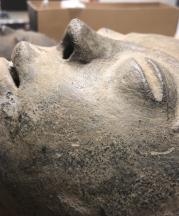Author Profile
Chenoa Baker
Chenoa Baker (she/her) is a curator, writer, professor, and descendant of self-emancipators. She has contributed to major exhibitions, including Simone Leigh and Simone Leigh: Sovereignty at ICA/Boston, Gio Swaby: Fresh Up at the Peabody Essex Museum, and Touching Roots: Black Ancestral Legacies in the Americas at the MFA/Boston. In recognition of her curatorial work, she received the WBUR Maker Award and was featured on NPR’s All Things Considered in 2024. In 2023, she won the AICA Young Art Critics Prize for her writing. She writes for Hyperallergic, The Brooklyn Rail, Public Parking, Material Intelligence, and Studio Potter, among others. To learn more, visit chenoabaker.org.






